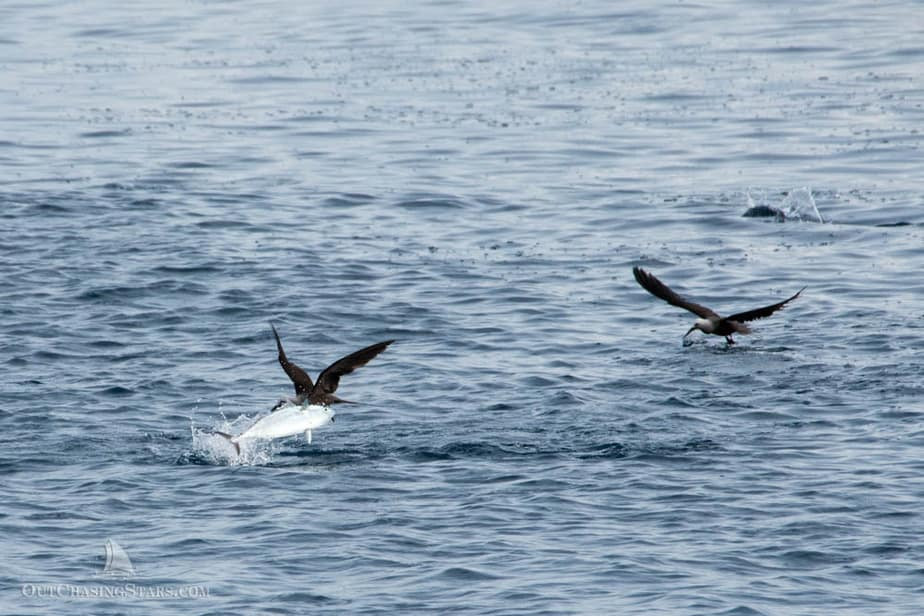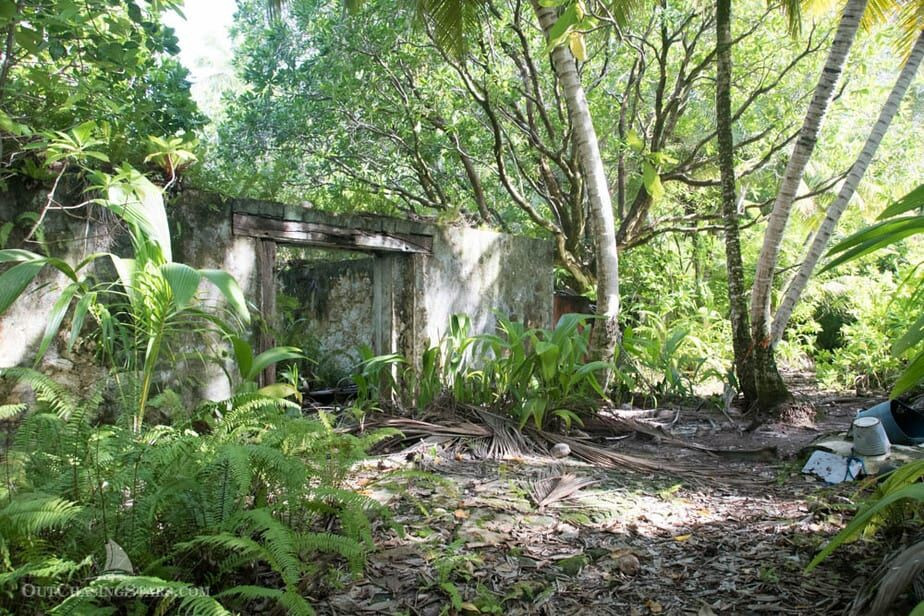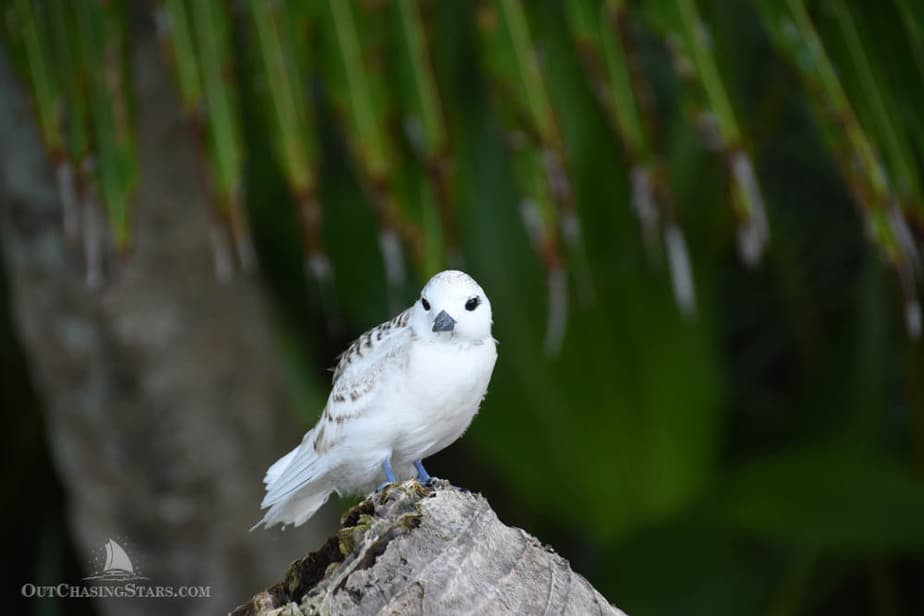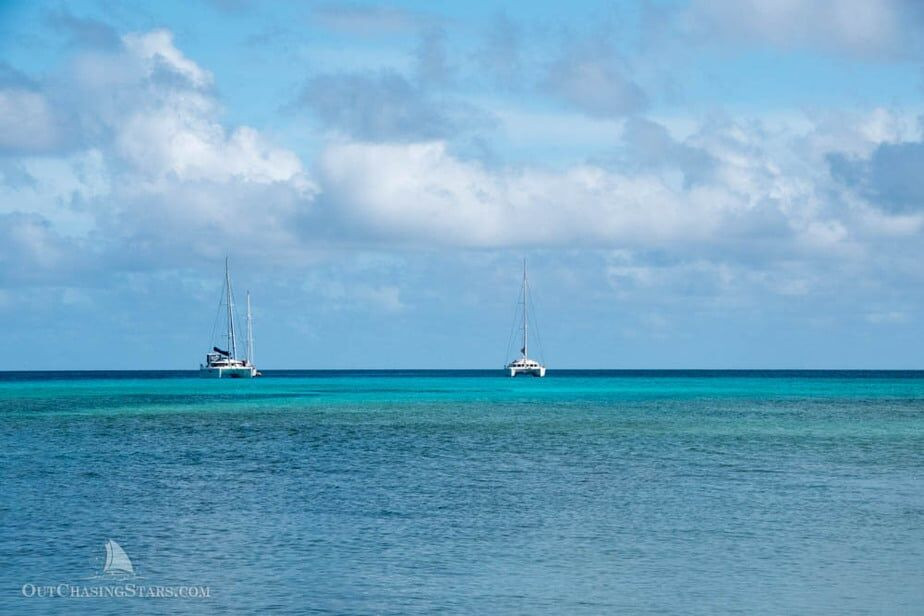Chagos Islands Tourism offers a unique and pristine destination for adventurous travelers seeking untouched natural beauty and a glimpse into a complex history. While tourism is limited, SIXT.VN understands the allure of exploring remote paradises and provides expert guidance to help you plan your journey. Discover the allure of the Chagos Archipelago, explore its unique ecosystem, and learn about responsible travel with SIXT.VN today.
1. What Makes Chagos Islands a Unique Tourist Destination?
The Chagos Archipelago stands out as a truly unique tourist destination for several compelling reasons. Its remote location in the Indian Ocean, coupled with its history and restricted access, has preserved its natural beauty and biodiversity to an unparalleled degree. Here’s why the Chagos Islands are so special:
- Pristine Environment: Far from major population centers and industrial activity, the Chagos Islands boast an incredibly pristine environment. The waters surrounding the islands are crystal clear, teeming with vibrant coral reefs and diverse marine life.
- Untouched Ecosystems: The islands themselves are largely untouched, with lush vegetation and thriving bird populations. This makes it a haven for nature lovers and those seeking to experience unspoiled ecosystems.
- Limited Access: Due to its history and the presence of a military base on Diego Garcia, access to the Chagos Islands is highly restricted. This exclusivity adds to the allure for adventurous travelers seeking a truly off-the-beaten-path experience.
- Rich Biodiversity: The Chagos Archipelago is recognized as a biodiversity hotspot, with a high concentration of unique and endangered species. Snorkeling and diving in its waters offer the chance to encounter a stunning array of marine life, from colorful reef fish to manta rays and sharks.
- Complex History: The islands have a complex and controversial history, marked by the displacement of the Chagossian people. Visiting the Chagos Islands offers a chance to learn about this history and reflect on the human impact on this remote corner of the world.
While large-scale tourism is not permitted, opportunities exist for sailors and researchers to visit with the appropriate permits. Responsible and sustainable travel practices are essential to protect the fragile environment and respect the history of the islands.
 Chagos Islands pristine waters
Chagos Islands pristine waters
2. How Can I Obtain a Permit to Visit the Chagos Islands?
Obtaining a permit to visit the Chagos Islands is a prerequisite due to the area’s protected status as the British Indian Ocean Territory (BIOT). The process involves several steps and requires careful planning.
-
Determine Eligibility: Currently, the primary way to visit the Chagos Islands is via yacht or sailboat. Permits are primarily granted to:
- Cruising Yachts: Sailors who are passing through the Indian Ocean and wish to stop at the Chagos Archipelago.
- Research Teams: Scientists and researchers conducting studies on the islands’ unique biodiversity and marine ecosystems.
-
Application Process:
- Contact BIOT Administration: Begin by contacting the BIOT Administration. This can be done through the official BIOT website.
- Provide Detailed Information: Submit a detailed application that includes:
- Vessel Details: Name, type, registration, and specifications of the yacht.
- Crew Information: Names, nationalities, and passport details of all crew members.
- Itinerary: Proposed dates of arrival and departure, along with a detailed route plan within the archipelago.
- Purpose of Visit: A clear statement of the purpose of the visit (e.g., cruising, research).
- Equipment: List of all equipment on board, including communication and safety gear.
-
Permit Conditions:
- Adherence to Regulations: Strictly adhere to all regulations set by the BIOT Administration.
- Designated Anchorages: Use only designated anchorages to protect the coral reefs.
- Environmental Protection: Follow guidelines to minimize environmental impact, including waste management and avoiding disturbance to wildlife.
- No Diving Without Permission: Diving is generally prohibited without specific permission due to the lack of emergency medical facilities.
-
Notification of Arrival and Departure:
- Arrival Notice: Send a notice of arrival to the BIOT Administration upon entering the economic zone and again when anchoring.
- Departure Notice: Notify the BIOT Administration when departing from the archipelago.
-
Inspection and Compliance:
- Potential Boarding: Be prepared for potential boarding and inspection by BIOT patrol vessels to verify compliance with permit conditions.
While the permit application process may seem complex, it is essential to ensure the protection and preservation of this unique and fragile environment.
3. What Are the Key Attractions in the Chagos Archipelago?
The Chagos Archipelago, with its pristine environment and unique biodiversity, offers several key attractions for visitors who are fortunate enough to obtain a permit.
- Salomon Atoll: This is a popular stop for yachts, offering sheltered anchorages and opportunities for exploring uninhabited islands. Ile Boddam, in particular, holds historical significance as the site of a former Chagossian settlement.
- Diego Garcia: The largest island in the archipelago, Diego Garcia, is home to a joint US/UK military base. While access to the base itself is restricted, the surrounding waters offer excellent fishing and diving opportunities.
- Peros Banhos Atoll: Known for its extensive coral reefs and diverse marine life, Peros Banhos Atoll is a paradise for snorkelers and divers. The atoll is also home to several uninhabited islands that offer pristine beaches and opportunities for birdwatching.
- The Nature Reserve: The Chagos Archipelago is home to one of the largest Marine Protected Areas (MPAs) in the world. This vast area is teeming with marine life, including sharks, rays, turtles, and a stunning array of fish species.
- Birdwatching: The uninhabited islands of the Chagos Archipelago provide important nesting sites for a variety of seabirds. Birdwatchers can spot species such as red-footed boobies, frigatebirds, and terns.
- Historical Sites: Ile Boddam offers a glimpse into the history of the Chagossian people, with ruins of former settlements and a memorial to those who were displaced.
 Ile Boddam ruins in Chagos Islands
Ile Boddam ruins in Chagos Islands
4. What Activities Can Tourists Enjoy in the Chagos Islands?
The Chagos Islands offer a range of activities centered around its pristine natural environment.
- Snorkeling and Diving: The clear waters and vibrant coral reefs surrounding the islands make it a paradise for snorkeling and diving.
- Sailing and Cruising: The Chagos Archipelago is a popular stop for yachts and sailboats crossing the Indian Ocean. Cruisers can explore the various atolls and islands, enjoying the solitude and beauty of this remote destination.
- Fishing: The waters around the Chagos Islands are teeming with fish, making it a popular destination for anglers.
- Wildlife Watching: The uninhabited islands of the Chagos Archipelago provide opportunities for birdwatching and observing other wildlife.
- Island Exploration: Exploring the uninhabited islands of the Chagos Archipelago offers a chance to discover pristine beaches, lush vegetation, and unique ecosystems.
- Photography: The stunning natural beauty of the Chagos Islands makes it a photographer’s dream.
5. What Should I Know About the History and Culture of the Chagos Islands?
Understanding the history and culture of the Chagos Islands is crucial for any visitor, as it adds depth and context to the experience.
- Early History: The Chagos Archipelago was uninhabited until the late 18th century when the French established coconut plantations and brought slaves from Africa to work on them.
- British Control: In 1814, the Chagos Islands came under British control following the Napoleonic Wars.
- Chagossian People: The descendants of the African slaves, known as Chagossians, developed a unique culture and way of life on the islands. They spoke a French-based Creole language and lived primarily on the islands of Diego Garcia, Salomon, and Peros Banhos.
- Displacement: In the 1960s, the British government decided to lease Diego Garcia to the United States for the construction of a military base. Between 1968 and 1973, the Chagossian people were forcibly removed from their homes and relocated to Mauritius and the Seychelles.
- Ongoing Controversy: The displacement of the Chagossians remains a highly controversial issue, with ongoing legal battles and international pressure for the right of return.
- Cultural Loss: The displacement of the Chagossians resulted in the loss of their unique culture and way of life.
- Respectful Tourism: Visitors to the Chagos Islands should be aware of this history and show respect for the Chagossian people and their heritage.
6. What Are the Environmental Considerations for Visiting the Chagos Islands?
Visiting the Chagos Islands requires a strong commitment to environmental responsibility.
- Fragile Ecosystems: The Chagos Archipelago is home to fragile coral reefs, pristine beaches, and unique ecosystems that are vulnerable to human impact.
- Marine Protected Area: The Chagos Archipelago is part of one of the largest Marine Protected Areas (MPAs) in the world, which aims to conserve its biodiversity and protect its marine environment.
- Sustainable Practices: Visitors should adhere to strict guidelines to minimize their environmental impact.
- Waste Management: Proper waste disposal is essential to prevent pollution of the marine environment.
- Anchoring: Use designated anchorages to avoid damaging coral reefs.
- Wildlife Disturbance: Avoid disturbing wildlife, including seabirds, turtles, and marine mammals.
- No Souvenir Collection: Do not collect shells, coral, or other natural items as souvenirs.
- Support Conservation: Support organizations and initiatives that work to protect the Chagos Archipelago and its environment.
- Leave No Trace: Follow the “Leave No Trace” principle, ensuring that you leave the environment as you found it.
7. What Kind of Wildlife Can I Expect to See on the Chagos Islands?
The Chagos Islands are a haven for wildlife, both on land and in the sea.
- Seabirds: The islands are home to a variety of seabirds, including red-footed boobies, frigatebirds, terns, and noddies.
- Marine Life: The waters surrounding the Chagos Islands are teeming with marine life, including sharks, rays, turtles, dolphins, and a stunning array of fish species.
- Coconut Crabs: These large crustaceans are found on many of the islands and are a unique sight to behold.
- Land Crabs: Various species of land crabs inhabit the islands, playing an important role in the ecosystem.
- Reptiles: Lizards and geckos are common on the islands.
- Introduced Species: Some introduced species, such as rats and cats, pose a threat to native wildlife. Conservation efforts aim to control these populations and protect native species.
 Chagos Islands crab
Chagos Islands crab
8. What Type of Accommodation Options Are Available on the Chagos Islands?
Accommodation options on the Chagos Islands are extremely limited due to the remote location and protected status of the archipelago.
- Yachts and Sailboats: The primary way to visit the Chagos Islands is by yacht or sailboat, which serves as your accommodation during your stay.
- Military Base: Diego Garcia is home to a joint US/UK military base, but accommodation is restricted to military personnel and authorized visitors.
- No Hotels or Resorts: There are no hotels, resorts, or other commercial accommodations available on the Chagos Islands.
- Camping: Camping is generally not permitted on the islands without specific permission from the BIOT Administration.
9. What Are the Safety Considerations for Traveling to the Chagos Islands?
Traveling to the Chagos Islands requires careful consideration of safety due to its remote location and limited resources.
- Medical Facilities: Medical facilities on the Chagos Islands are extremely limited. Diego Garcia has a military medical facility, but access is restricted to military personnel and authorized visitors.
- Emergency Evacuation: Emergency evacuation from the Chagos Islands can be challenging and time-consuming.
- Weather Conditions: Weather conditions in the Indian Ocean can be unpredictable.
- Navigation: Navigating the waters around the Chagos Islands requires careful attention to charts and navigational aids.
- Marine Hazards: Be aware of potential marine hazards, such as coral reefs, strong currents, and sharks.
- Permit Compliance: Adhere to all permit conditions and regulations set by the BIOT Administration.
- Communication: Ensure you have reliable communication equipment on board your vessel.
- Travel Insurance: Obtain comprehensive travel insurance that covers medical emergencies, evacuation, and other unforeseen events.
10. What Essential Items Should I Pack for a Trip to the Chagos Islands?
Packing for a trip to the Chagos Islands requires careful consideration due to the remote location and limited resources.
- Permit and Documentation: Ensure you have your permit to visit the Chagos Islands, along with all necessary travel documents.
- Navigation Equipment: Pack essential navigation equipment, including charts, GPS, and a compass.
- Communication Devices: Bring reliable communication devices, such as a satellite phone or HF radio.
- First-Aid Kit: Pack a comprehensive first-aid kit with all necessary medications and supplies.
- Sun Protection: Protect yourself from the strong tropical sun with sunscreen, hats, and sunglasses.
- Insect Repellent: Protect yourself from mosquitoes and other insects with insect repellent.
- Appropriate Clothing: Pack lightweight, breathable clothing suitable for a tropical climate.
- Sturdy Footwear: Bring sturdy footwear for exploring the islands.
- Snorkeling and Diving Gear: If you plan to snorkel or dive, bring your own gear.
- Camera: Capture the stunning natural beauty of the Chagos Islands with a camera.
- Binoculars: Enhance your wildlife viewing experience with binoculars.
- Water Bottle: Stay hydrated by bringing a reusable water bottle.
- Trash Bags: Help keep the islands clean by bringing trash bags to collect your waste.
- Cash: Credit cards are not widely accepted, so bring enough cash to cover your expenses.
11. How Can SIXT.VN Help Me Plan My Trip to Other Exotic Destinations Like the Chagos Islands?
While SIXT.VN primarily focuses on travel services within Vietnam, we can certainly inspire and guide you toward planning trips to exotic destinations like the Chagos Islands.
- Expert Consultation:
- Destination Insights: SIXT.VN can provide detailed information about exotic destinations, including the Chagos Islands, helping you understand the unique aspects, challenges, and opportunities.
- Planning Assistance: We can assist in outlining a preliminary itinerary, suggesting the best times to visit, and advising on essential preparations.
- Connecting with Specialized Tour Operators:
- Trusted Partners: SIXT.VN can connect you with reputable international tour operators and travel agencies that specialize in remote and exotic destinations.
- Customized Itineraries: These partners can create customized itineraries tailored to your interests, whether it’s sailing, diving, wildlife observation, or historical exploration.
- Essential Travel Arrangements:
- International Flights: SIXT.VN can help you find and book international flights to gateway cities near the Chagos Islands, such as Mauritius or the Seychelles.
- Accommodation Advice: While there are no hotels on the Chagos Islands, we can assist in booking pre- and post-trip accommodations in nearby locations.
- Permit and Regulatory Guidance:
- Application Process: SIXT.VN can provide guidance on the permit application process for the Chagos Islands, helping you understand the necessary documentation and requirements.
- Regulatory Compliance: We can ensure you are aware of all environmental and safety regulations to comply with during your visit.
- Comprehensive Travel Support:
- Travel Insurance: SIXT.VN can assist you in securing comprehensive travel insurance that covers medical emergencies, evacuations, and other unforeseen events.
- Travel Advice: We offer valuable travel advice on health precautions, packing essentials, and cultural sensitivities to ensure a smooth and respectful travel experience.
- Local Insights for Related Destinations:
- Exploring Vietnam: If you are combining your exotic travel plans with a visit to Vietnam, SIXT.VN can provide extensive local insights, including transportation, accommodation, and tour options.
- Cultural Experiences: Discover Vietnam’s rich culture and natural beauty with our expert guidance.
 Ile Fouquet in Chagos Islands
Ile Fouquet in Chagos Islands
12. What are the Pros and Cons of Chagos Islands Tourism?
Chagos Islands Tourism presents unique advantages and disadvantages due to its remote location and complex history.
Pros:
- Pristine Environment: The Chagos Islands offer an untouched natural environment with crystal-clear waters, vibrant coral reefs, and diverse marine life.
- Exclusive Experience: Limited access ensures a unique and exclusive travel experience, far from crowded tourist destinations.
- Biodiversity Hotspot: The islands are a haven for wildlife, offering opportunities for birdwatching, snorkeling, and diving in a rich ecosystem.
- Historical Significance: Visiting the Chagos Islands provides an opportunity to learn about the history of the Chagossian people and the ongoing controversies surrounding their displacement.
- Adventure and Exploration: The remote location and uninhabited islands offer a sense of adventure and exploration for intrepid travelers.
Cons:
- Limited Access: Obtaining a permit to visit the Chagos Islands is difficult and requires careful planning.
- Lack of Accommodation: There are no hotels or resorts on the islands, requiring visitors to stay on yachts or sailboats.
- Limited Facilities: Medical facilities and other essential services are extremely limited, requiring visitors to be self-sufficient.
- Safety Concerns: Emergency evacuation can be challenging and time-consuming due to the remote location.
- Environmental Responsibility: Visitors must adhere to strict guidelines to minimize their environmental impact and protect the fragile ecosystems.
- Ethical Considerations: Tourism to the Chagos Islands raises ethical questions surrounding the displacement of the Chagossian people and the ongoing controversy over their right of return.
13. What Are Some Lesser-Known Facts About the Chagos Islands?
Delving into lesser-known facts about the Chagos Islands can enrich your understanding and appreciation of this unique destination.
- Submerged Islands: The Chagos Archipelago is part of a larger underwater geological structure known as the Mascarene Plateau. Many islands and reefs that were once above sea level are now submerged, creating diverse marine habitats.
- Coconut Industry: In the past, the Chagos Islands thrived on the coconut industry. Plantations were established, and copra (dried coconut kernels) was the main export. Remnants of these plantations can still be found on some islands.
- Unique Creole Language: The Chagossian people developed their own unique Creole language, known as Kreol Chagossian, blending French with African and Asian influences.
- Postal Stamps: The British Indian Ocean Territory (BIOT), which includes the Chagos Archipelago, issues its own postal stamps, which are popular among collectors.
- Marine Protected Area: The Chagos Archipelago is home to one of the largest Marine Protected Areas (MPAs) in the world, covering an area of 640,000 square kilometers. This MPA plays a crucial role in conserving the biodiversity of the Indian Ocean.
- Seabird Colonies: The uninhabited islands of the Chagos Archipelago provide critical nesting sites for various seabird species, including red-footed boobies, frigatebirds, and terns.
- Ghost Stories: Some sailors who have visited the Chagos Islands have reported eerie experiences and ghost stories, adding to the mystique of this remote archipelago.
14. What Role Does the Military Base on Diego Garcia Play in Chagos Islands Tourism?
The military base on Diego Garcia significantly impacts tourism in the Chagos Islands.
- Restricted Access: The presence of the military base restricts access to the Chagos Archipelago, as permits are required to visit and are primarily granted to sailors and researchers.
- Economic Impact: The military base provides employment opportunities for some Chagossians who were displaced from the islands, although this remains a controversial issue.
- Environmental Concerns: The military base has raised environmental concerns due to potential pollution and habitat destruction.
- Logistical Support: The military base provides logistical support for scientific research and conservation efforts in the Chagos Archipelago.
15. What Future Developments Can Be Expected for Chagos Islands Tourism?
The future of Chagos Islands Tourism is uncertain due to the ongoing legal battles and political complexities surrounding the archipelago.
- Chagossian Right of Return: The Chagossian people are fighting for the right to return to their homeland, which could lead to changes in the management and development of the islands.
- Sustainable Tourism: There is potential for developing sustainable tourism initiatives that benefit the Chagossian people and protect the environment.
- Marine Research: The Chagos Archipelago is a valuable site for marine research, which could attract more scientists and researchers to the islands.
- Conservation Efforts: Ongoing conservation efforts aim to protect the biodiversity of the Chagos Archipelago and promote sustainable management of its natural resources.
Navigating the complexities of Chagos Islands Tourism requires expertise and a commitment to responsible travel. While SIXT.VN focuses on providing exceptional travel services in Vietnam, we hope this guide has inspired you to explore the possibilities and challenges of visiting this unique and remote destination.
For those planning a trip to Vietnam, SIXT.VN offers a range of services, including airport transfers, hotel bookings, and customized tours, to ensure a seamless and unforgettable travel experience.
Ready to explore Vietnam? Contact SIXT.VN today to start planning your adventure
Address: 260 Cau Giay, Hanoi, Vietnam
Hotline/WhatsApp: +84 986 244 358
Website: SIXT.VN



